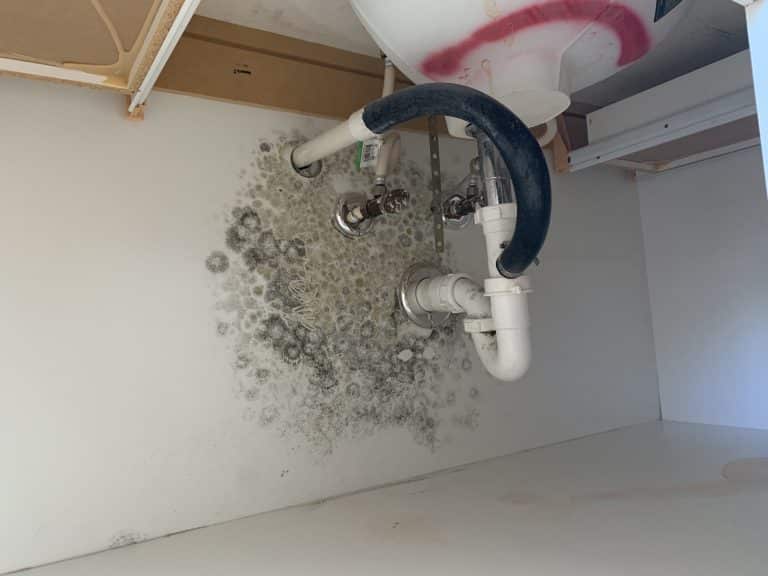Experiencing a musty odor (a lot like old cheese or the locker room at high school) every time you step into your basement? Commonly caused by molds and bacteria, these odors are a source of introducing Microbial Volatile Organic to your environment.
Microbial Volatile Organic compounds, also known as MVOCs are compounds that are developed in the metabolism of a fungi and bacteria. While volatile compounds (VOCs) are chemical with a much lower molecular weight and low water solubility, MVOCs are released into the air as a byproduct of the metabolic process of a decay agent. The off-gassing produced as a result includes alcohols such as carboxylic acids, terpenes, esters and ketones. Whereas the MVOCs produced include: Ethanol, terpenes, geosmin, benzyl cyanide etc.
Wondering if Microbial Volatile Organic Compounds can have detrimental effects on your health?
In this article we will look into some common sources of MVOCs and discuss how the presence of MVOCs can lead to a series of health complications.
Exposure to MVOCs
Exposure to MVOCs is caused by both: specific activities, products, and through the presence of fungal contaminants in the air (air borne exposure).
Human activities that promote development of MVOCs include: smoking and traffic congestion. Whereas, a number of products including building paint materials and certain food can contain MVOCs.
Other routes of exposure to MVOCs is triggered by water-damaged environments (specifically indoor environments) and also through coming in contact with mycotoxins present in an indoor setting. “Respirable particles (<1.0 micron) represent the majority of particulate material found in indoor air [54] and mycotoxins have been found to be present on these indoor particles which include hyphal fragments [55]. Trichothecene mycotoxins have been found to be present in the air of buildings contaminated by Stachybotrys mold,” notes a study on environmental medicine.
Furthermore, the production of MVOCs is also largely dependent upon the substrate on which mold producing the MVOC might be growing on, the presence of humidity and the overall temperature of the moldy environment. While the presence of MVOCs might sound like bad news, the US EPA Mold and Water Damage study reflects upon the key role that MVOCs play in helping detect the presence of mold inside home. “Molds also contain substances known as beta glucans; mVOCs and beta glucans might be useful as markers of exposure to molds.”
How To Identify MVOCs In Your Environment?
A study focusing on 23 homes revealed that a high level of certain types of MVOCs in basements floors compared to those found of on the main floor of the house didn’t differ a lot in nature.
A strange odor is perhaps the most effective way of identifying the very first signs of MVOCs being present in your environment. These odors can include:
- A fruity smell
- Musty & earthy odor
- Mushroom-like smell
Effects Of MVOCs on Human Health
A study by the University of Kuopio, Department of Environmental Science, summarized the properties of 96 MVOCS. “In this review, the basic physical and chemical properties of 96 typical MVOCs have been summarized. Of these, toxicological and exposure data were gathered for the 15 MVOCs most often analyzed and reported in buildings with moisture and microbial damage. The most obvious health effect of MVOC exposure is eye and upper-airway irritation.”
MVOCs range from causing no serious reaction to allergic reactions or cases of serious asthma and neurological complications, and should therefore be taken seriously.
In a human experimental study, Wålinder et al notes, “some signs of inflammatory responses and respiratory reactions were reported after MVOC exposure Human subjects (n=30) were exposed to 10 mg/m3 of 1-octen3-ol for 2 hours. Increases in eye, nose and throat irritation, headache, dizziness, nausea, intoxication, blinking frequency, and in the amounts of lysozyme, myeloperoxidase and eosinophilic cationic protein in the nasal lavage fluid were reported.”
The following are some common effects of MVOCs on your health:
- Discomfort is more commonly experienced
- Headaches, dizziness and fatigue
- Eye, throat and nose irritation can be caused
- Wheezing, coughing, congestion, and phlegm development can occur
- Asthma-like symptoms can begin to show
Furthermore, another study noted that MVOCs such as 3-methylfuran, 2-heptanone, 1-octen-3-ol, and 2-methylisoborneol are linked to causing asthma amongst individuals; especially those working at schools with a higher presence of airborne fungi in their environment.
MVOCs A Possible Cause of Parkinson’s Disease?
Over the last few years there has been plenty of back and forth going on in hopes of determining a possible link between MVOCs and Parkinson’s disease. While most claims are made without the support of solid evidence that confirms MVOCs being able to cause the Parkinson disease amongst humans, a study performed on fruit flies at the Rutgers University revealed that MVOCs caused an almost Parkinson’s-like effect.
How To Prevent or Control The Development of MVOCs?
We strongly believe that prevention is the key. With MVOCs in particular, it is important that you take measures all year round to ensure that your surroundings remain free of stinky, musty odors, and other signs and effects typically associated with MVOCs.
- Perform cleaning of air ducts and HVAC systems on monthly basis
- Control the humidity in your environment and maintain it below 45%
- Remove/replace old carpeting with synthetic flooring.
- Ensuring that there is plenty of fresh air flowing into the space. Try to keep windows open as often as possible or invest in an air recovery system
- Identify signs of water damage and perform repair and replacements without any further delay
Being able to detect the presence of contaminants in your environment is crucial since life-safety concerns can possibly be involved. Determined to keep you and your family safe and ensure that you are surrounded by a healthy environment, we recommend the use of an indoor sampling plan for most residential buildings and encourage you to pay careful attention to any signs that suggest the presence of MVOCs in your home, school, or work environment.








